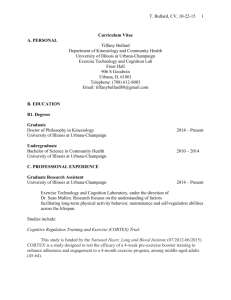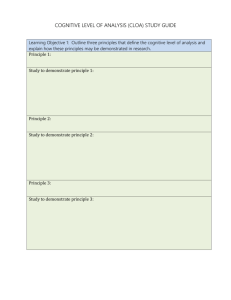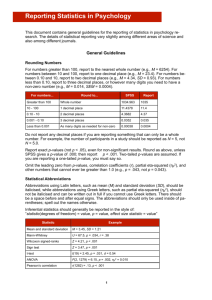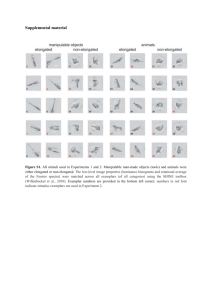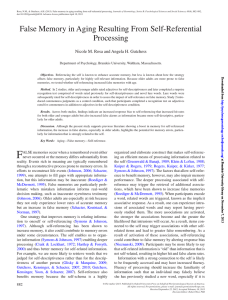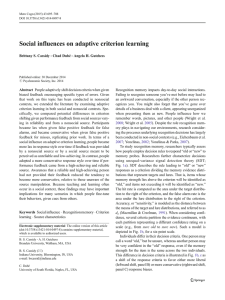Abstract Here - Exercise, Technology, & Cognition Lab
advertisement
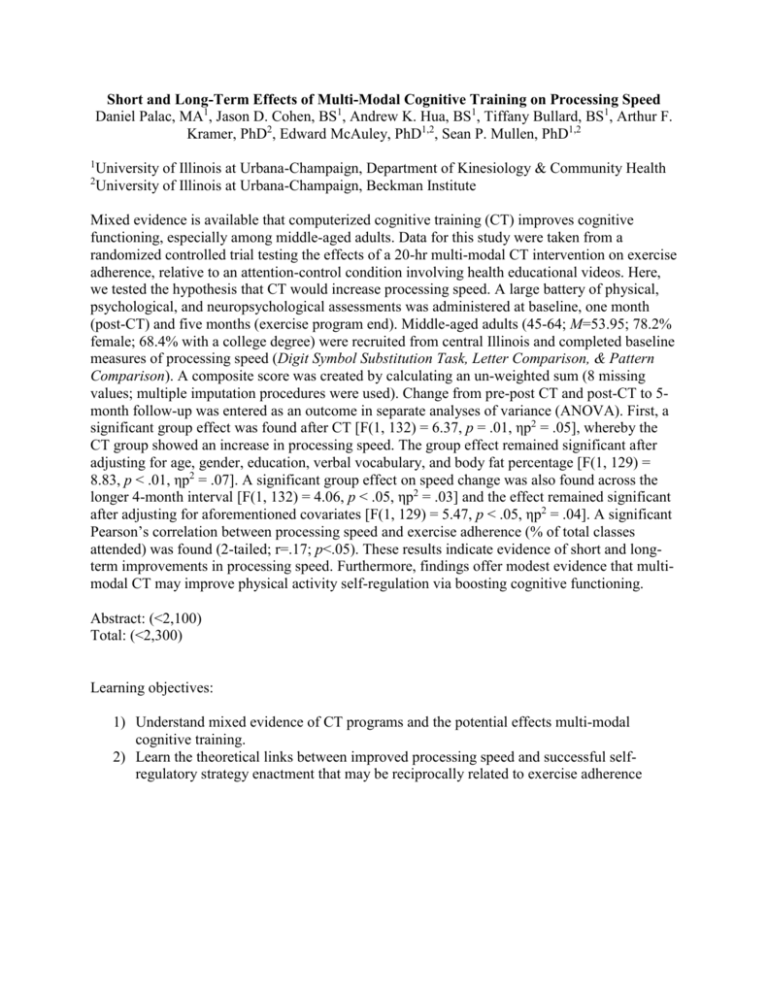
Short and Long-Term Effects of Multi-Modal Cognitive Training on Processing Speed Daniel Palac, MA1, Jason D. Cohen, BS1, Andrew K. Hua, BS1, Tiffany Bullard, BS1, Arthur F. Kramer, PhD2, Edward McAuley, PhD1,2, Sean P. Mullen, PhD1,2 1 2 University of Illinois at Urbana-Champaign, Department of Kinesiology & Community Health University of Illinois at Urbana-Champaign, Beckman Institute Mixed evidence is available that computerized cognitive training (CT) improves cognitive functioning, especially among middle-aged adults. Data for this study were taken from a randomized controlled trial testing the effects of a 20-hr multi-modal CT intervention on exercise adherence, relative to an attention-control condition involving health educational videos. Here, we tested the hypothesis that CT would increase processing speed. A large battery of physical, psychological, and neuropsychological assessments was administered at baseline, one month (post-CT) and five months (exercise program end). Middle-aged adults (45-64; M=53.95; 78.2% female; 68.4% with a college degree) were recruited from central Illinois and completed baseline measures of processing speed (Digit Symbol Substitution Task, Letter Comparison, & Pattern Comparison). A composite score was created by calculating an un-weighted sum (8 missing values; multiple imputation procedures were used). Change from pre-post CT and post-CT to 5month follow-up was entered as an outcome in separate analyses of variance (ANOVA). First, a significant group effect was found after CT [F(1, 132) = 6.37, p = .01, ηp2 = .05], whereby the CT group showed an increase in processing speed. The group effect remained significant after adjusting for age, gender, education, verbal vocabulary, and body fat percentage [F(1, 129) = 8.83, p < .01, ηp2 = .07]. A significant group effect on speed change was also found across the longer 4-month interval [F(1, 132) = 4.06, p < .05, ηp2 = .03] and the effect remained significant after adjusting for aforementioned covariates [F(1, 129) = 5.47, p < .05, ηp2 = .04]. A significant Pearson’s correlation between processing speed and exercise adherence (% of total classes attended) was found (2-tailed; r=.17; p<.05). These results indicate evidence of short and longterm improvements in processing speed. Furthermore, findings offer modest evidence that multimodal CT may improve physical activity self-regulation via boosting cognitive functioning. Abstract: (<2,100) Total: (<2,300) Learning objectives: 1) Understand mixed evidence of CT programs and the potential effects multi-modal cognitive training. 2) Learn the theoretical links between improved processing speed and successful selfregulatory strategy enactment that may be reciprocally related to exercise adherence


